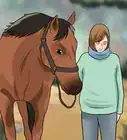wikiHow is a “wiki,” similar to Wikipedia, which means that many of our articles are co-written by multiple authors. To create this article, volunteer authors worked to edit and improve it over time.
There are 11 references cited in this article, which can be found at the bottom of the page.
This article has been viewed 80,569 times.
Learn more...
When a horse goes lame it is a major concern for the owner, and knowing how to treat lameness can have a positive impact on both the speed and success of recovery. From physiotherapy to medical treatments, this article considers different aspects of treating lameness in horses.
Steps
Reducing Inflammation
-
1Allow the horse to take plenty of rest. Box rest is the mainstay of lameness treatment for many horses. Depending on the nature of the lameness, horses may need rest for anywhere from a few days for a simple sprain, to weeks or even months for a more serious injury.
- Rest places less demands on an injured joint surface, where continued use would provoke further inflammation. Continuing to work a lame horse can potentially cause further physical damage, such as chip the inflamed cartilage lining to a join, and cause permanent harm.
- Also, working a lame horse provokes the release of further prostaglandins and hence worsens inflammation. By resting the horse you attempt to break this vicious circle.
-
2Cold hose the horse's leg for 20 minutes a day.[1] Cold hosing is a simple form of hydrotherapy employed to reduce swelling in a limb It involves running cool water from a garden hose over the lame leg. This is usually done for 20 minutes once or twice a day. The principle is that the cold water removes the heat associated with swelling, while the water flow massages the tissue and helps disperse fluid build-up.
- Ideally, the water temperature should be very cold. The advantage of hosing is that the temperature remains constant and does not warm up (as with an ice pack). 20 minutes sessions are ideal because this is enough time to disperse heat, but is not enough time for the cold to compromise blood circulation to the limb.
- It is a good idea to smear Vaseline or grease over the horse's heel prior to hosing. This prevents the tissue of the heel becoming softened by the constant stream of water which could predispose it to cracking and infection.
- Unless your horse is very well-mannered, hosing is a two person job – one to hose and one to steady the horse. Depending on the nature of the injury your veterinarian will advise on how many days to continue hosing after the swelling has resolved.
Advertisement -
3Try hot tubbing to treat lower limb lameness. Hot tubbing is used to treat lower limb lameness where the cause is a suspected abscess or a foreign body in the hoof, because hot tubbing softens tissues and helps to draw infection out. It involves immersing the foot in a bucket of hot 100°F (38°C) water containing Epsom salts to soften the sole of the foot and allow infection to drain.
- Always clean the hoof thoroughly before immersing in the clean water.[2] If necessary use a hoof pick to clean the sole and frog, and wash the hoof in water ahead of tubbing. It is a good idea to remove the bucket handle to prevent the leg from accidentally getting trapped between the handle and bucket.
- Fill the bucket with hot water and add a cupful of Epsom salts. Stand the horse's leg into the bucket and keep it there for 15 to 20 minutes. As the water cools over time, remove the foot while you top the bucket up with hot water. After soaking for 20 minutes, place the hoof on a clean towel and dry it well. This procedure can be repeated 3 to 4 times daily.
-
4Use hot fomentation to treat abscesses and infection higher up on the leg. Fomentation has a similar indication as for tubbing (suspected infections, or abscesses), but is used on higher areas of the leg which are not practical to immerse in a bucket.
- To apply a hot fomentation, soak a clean towel in hot water and Epsom salts and wrap it around the swollen or inflamed part of the leg. Place a second towel in the bucket of water and Epsom salts.
- When the towel that is wrapped around the leg cools, replace it with the waiting hot one from the bucket. Use hot fomentation in 15 to 20 minute sessions, 3 to 4 times daily.
-
5Apply a poultice to reduce swelling after exercise.[3] Poultices have a number of applications in that they can reduce swelling after hard exercise and draw out infection from an abscess. Traditionally bran poultices were popular, but with the advent of many excellent commercial poultices, (such as Animalintex) the need for messy home-prepared poultices has dropped off.
- Commercial poultices come as an impregnated sheet with a shiny side (face this away from the animal) and an absorbent side (applied to the injury). First cut your poultice to the desired size so that the injured area is completely covered. It can be used dry (great for reducing swelling) or wet (to draw out infection). Both methods are applied in the same way, but when using a wet poultice the precut material is soaked in hot water first, and allowed to cool to 100°F.
- The poultice is placed against the injury or swelling and held in place with a dressing such as Vetwrap self-adhesive bandage. Enough tension is applied to the bandage to stop it from slipping down, but not so much as to cut off the circulation to the limb.
- A poultice should never be left on for more than 12 hours, and it is preferable to change them 2 or 3 times daily.
Relieving Pain
-
1Use pain relieving medications to help with lameness. Pain relief has an important role to play in the treatment of lameness. Modern painkillers (analgesics) have a dual action of reducing pain and inflammation, and belong to the non-steroidal anti-inflammatory group of drugs (NSAIDS).[4]
- NSAIDs work by inhibiting the action of cyclooxygenase enzymes (COX1 and COX2). It is the COX enzymes that release prostaglandins that cause inflammation and pain. By blocking COX enzymes the mediators of inflammation (prostaglandins) are reduced and so pain is reduced.
- The most commonly used NSAID pharmaceuticals for the relief of bone and joint problems in the horse are aspirin, flunixin, and phenylbutazone.
-
2Give your horse aspirin for mild pain. Aspirin (acetylsalicylic acid) is effective against mild pain, swelling, and discomfort. Some aspirin products are available over the counter from pharmacies which makes them a useful first option treatment for mild lameness.[5]
- AniPrin contains powdered acetylsalicylic acid mixed with a palatable molasses flavor base, designed to be mixed into the horse's feed.[6] The dose is 10mg/kg once daily.
- For a 500kg horse this equates to 5,000mg (or 5 grams) of AniPrin. Two scoops are supplied with the product: the larger measures out 28.35grams, and the smaller 3.75grams. Thus, a typical 500kg horse requires 1.5 small scoops of AniPrin once daily on food.
- Never give aspirin to a horse that is taking other medications without first consulting your vet, and always provide a plentiful supply of fresh water.
-
3Use phenylbutazone to reduce pain and fever. Commonly known as "bute" amongst horse owners, phenylbutazone reduces pain and fever. Phenylbutazone is a prescription NSAID and needs to be prescribed by your vet. It should not be used in combination with other NSAIDs, steroids, or given on an empty stomach.[7]
- Phenylbutazone interacts with some medications (such as phenytoin, sulfonamides, warfarin, barbiturates, and digoxin) so always speak to your vet before starting treatment.[8]
- A typical equine preparation is of phenylbutazone is Butazolidin. The dose for a 454kg horse is 2 to 4grams once a day with or after food. It is available as 1gram tablets, an oral paste, or an oral powder containing 1g of phenylbutazone in a 10gram sachet. The manufacturer advises not to exceed 4g rams a day, and to administer the lowest effective dose where possible.
-
4Get a prescription for flunixin to reduce pain and inflammation. Flunixin is another prescription NSAID, sold commercially as Banamine.
- Banamine is a potent cyclooxygenase inhibitor which inhibits prostaglandin and therefore brings down inflammation. It is rapidly absorbed from the stomach and small intestine, and each dose works for 24 to 30 hours.
- The dose of Banamine is 1.1mg/kg once daily by mouth.[9] Therefore, a 500kg horse requires 550 mg (0.5g), which is equivalent to one 20g sachet which contains 500mg of flunixin.
-
5Be aware of the possible side effects of NSAIDs. NSAIDS can reduce the blood supply to the stomach and kidneys. While this should not be significant in healthy, well-hydrated horses (especially when the medication is given with food), NSAIDs should never be given to dehydrated animals because this could concentrate the drug and amplify its damaging effects on the kidney.[10]
- Other side effects of NSAIDs include gastric ulceration and possible worsening of pre-existing kidney disease. This can manifest itself as a loss of appetite, and increased thirst. The treatment involves stopping NSAID medications and giving drugs such as activated charcoal in order to protect the stomach lining.
- A horse diagnosed with renal disease may need intravenous fluid therapy to flush the accumulation of naturally occurring toxins that the kidney has not got rid of out of the system.
Community Q&A
-
QuestionMy horse hind leg is swelling after exercise. What can I do?
 Community AnswerIf you cannot have a vet see your horse, ice the horse's legs once they start to swell. That should ease the swelling so it can heal faster.
Community AnswerIf you cannot have a vet see your horse, ice the horse's legs once they start to swell. That should ease the swelling so it can heal faster. -
QuestionHow do I treat a ligament strain?
 Community AnswerWrap the injury in a sticky Ace bandage, and let the horse rest. It may take time, but you don't want to end up hurting the horse even more.
Community AnswerWrap the injury in a sticky Ace bandage, and let the horse rest. It may take time, but you don't want to end up hurting the horse even more. -
QuestionIs cider vinegar and salt a good treatment for a horse who is not walking around very well?
 Community AnswerNo. Your best bet is to talk to your vet and farrier to see if the horse is lame or has an abscess in his/her hoof. It's best to be proactive when it comes to potential lameness.
Community AnswerNo. Your best bet is to talk to your vet and farrier to see if the horse is lame or has an abscess in his/her hoof. It's best to be proactive when it comes to potential lameness.
Warnings
- NSAIDs reduce the blood supply to the gut and stomach wall, which can make it more easily devitalized and vulnerable to ulcer formation. For this reason NSAIDs should never be given on an empty stomach, and most equine formulations are designed to be mixed in feed so that the food provides a protective barrier avoiding direct contact of the drug with the stomach lining.⧼thumbs_response⧽
References
- ↑ https://equusmagazine.com/management/chill-factor-29633
- ↑ https://practicalhorsemanmag.com/health-archive/ten-horse-hoof-care-tips-11352
- ↑ https://www.youtube.com/watch?v=87bWMRF_Mrk
- ↑ https://thehorse.com/118918/pain-management-options-for-horses/
- ↑ Plumb's Veterinary Drug Handbook. Donald Plumb. Wiley-Blackwell
- ↑ https://www.drugs.com/vet/aniprin-p.html
- ↑ https://www.wedgewoodpetrx.com/learning-center/professional-monographs/phenylbutazone-for-veterinary-use.html
- ↑ Phenylbutazone in the horse: a review. Tobin, Kamerling, et al. J Vet Pharmacol Ther. 1986 Mar 9 (1): 1-25
- ↑ https://www.drugs.com/vet/banamine-paste.html
About This Article
To treat lameness in a horse’s legs, start by giving your horse lots of rest, which will lower inflammation and reduce the risk of further injury. If your horse has a swollen limb, run a hose of cold water over the lame leg for 20 minutes at a time, once or twice a day, to remove the heat associated with swelling. To treat lower limb areas like the hoof, you can make a heat treatment by placing the hoof in a bucket full of hot water and 1 cup of Epsom salt, and allow it to rest for 15 to 20 minutes, 3 to 4 times per day. For more tips on how to treat lameness in horses, like how to treat abscesses with hot fomentation, keep reading!
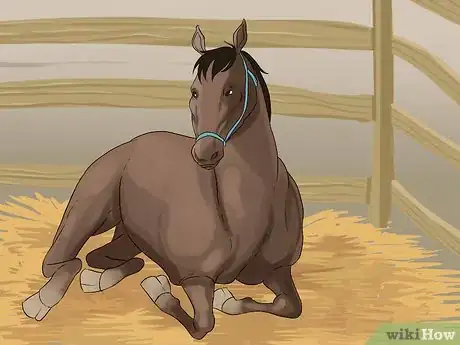
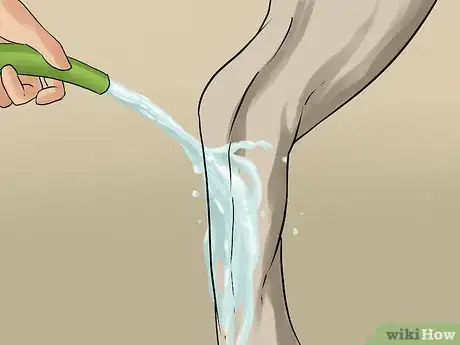
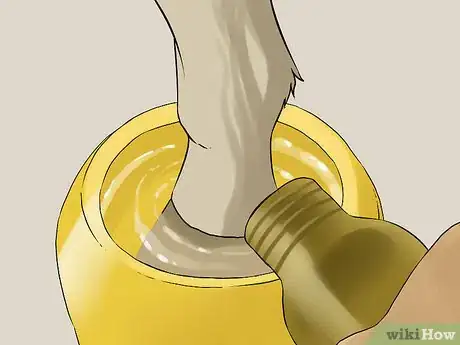
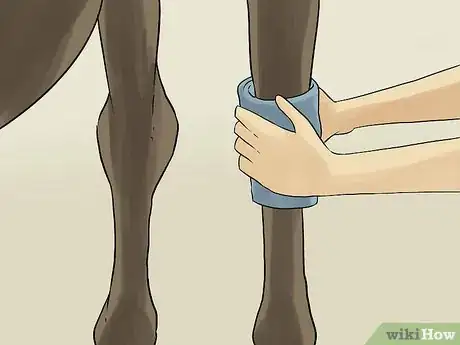
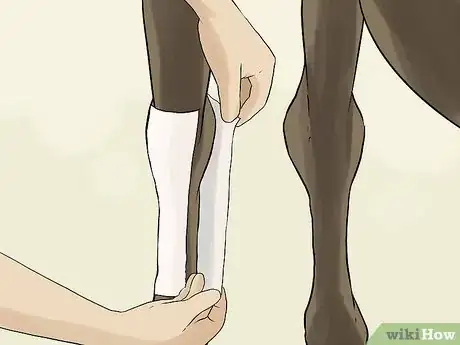
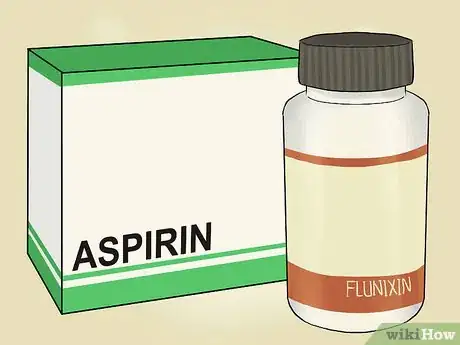
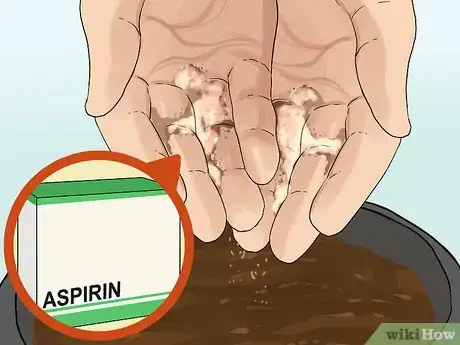
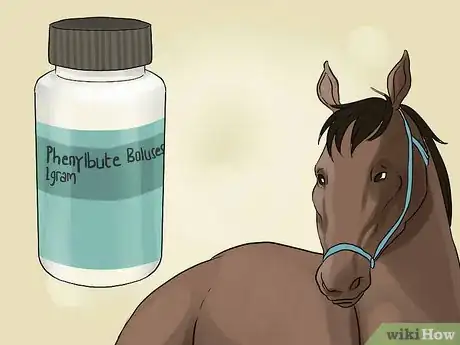
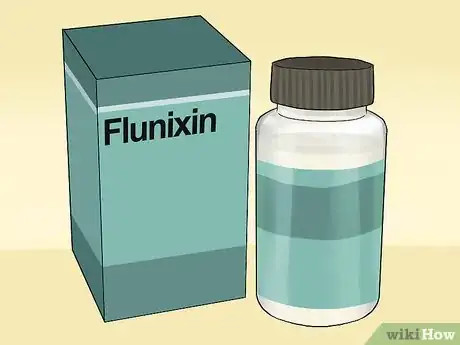
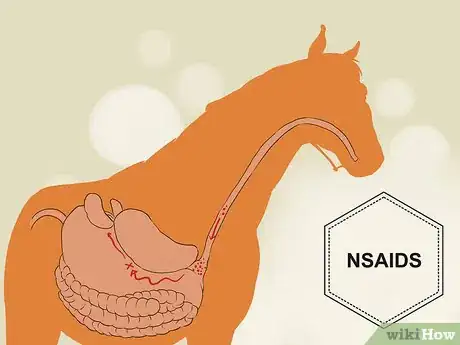
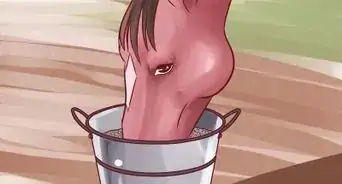
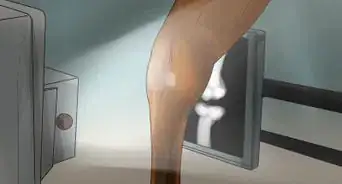
-in-Horses-Step-19-Version-2.webp)
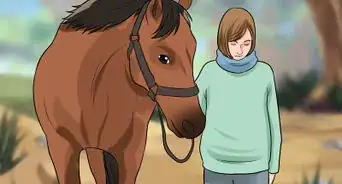
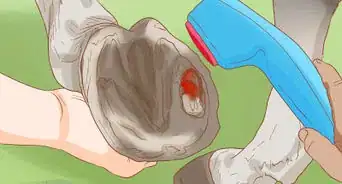







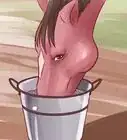
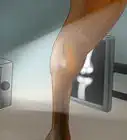
-in-Horses-Step-19-Version-2.webp)
